I was actually heading to bed when I noticed, that the sky cleared up enough to try to photograph Comet 64P/Swift-Gehrels.
As I wanted to create an image that included the Andromeda Galaxy, I used the 70-200 zoom and set it at about 130mm.
I was actually heading to bed when I noticed, that the sky cleared up enough to try to photograph Comet 64P/Swift-Gehrels.
As I wanted to create an image that included the Andromeda Galaxy, I used the 70-200 zoom and set it at about 130mm.
On November 5th I had the opportunity to do another test, this time using the 300mm lens, I also used the California Nebula as the target.
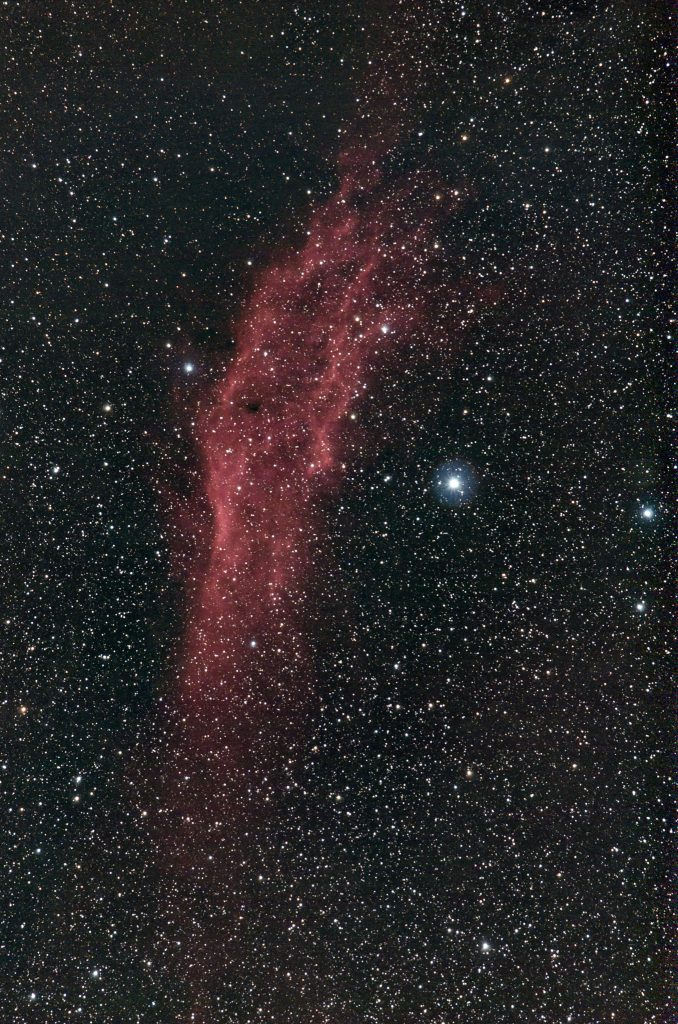
NGC1499, the California Nebula, 192x30s (1h 21min), Nikon D7000a, AF-S NIKKOR 300 mm 1:4E PF ED VR, calibrated in Regim, processed in Fitswork, Photoshop and Lightroom. Mount: Vixen Polarie.
The California nebula is hydrogen gas which is irradiated by the intense UV radiaton from Xi Persei, the bright star near the center of the image. It is about 1250 light years distant and is one of the intrinsically brightest and hottest stars visible to the unaided eye. It weighs in at about 40 solar masses. The surface temperature is a whopping 35000 Kelvin.
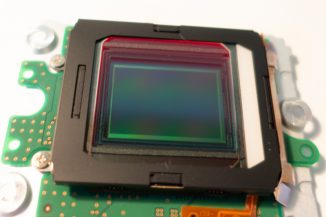
After I bought the D750 I rarely used the D7000 any more. As it has been heavily used it would probably not get a lot if I sold it, so It mostly stayed in the closet.
Then I learned that the Nikon D7000 sensor is still used in current astronomical CMOS cameras (e.g. ASI071MC Pro or QHY168C) apart from the cooled sensor the main advantage of the astronomical cameras is the better response to H-alpha emission because of different IR-cutoff wavelength.
H-alpha emission is the red light created when young, hot stars excite hydrogen gas in the interstellar medium. Regions of onging star birth are usually distinctly red. Sadly regular DSLR cameras pick up that red light only very faintly.
After a discussion with a colleague of the Vorarlberger Amateur Astronomen I plucked up the courage to take the camera apart and get rid of the IR blocking filter. Read More
NGC 891 is a beautiful spiral galaxy which is seen perpendicular to it’s rotational axis, so we see it edge on.
It is located in Andromeda, so there are many foreground stars.
I have seen it in telescopes as small as 15cm aperture, in my 250mm the dust lane becomes visible, but in a larger scope, like the 40cm I recently observed with, it is a really beautiful sight. But of course not as detailed as in this image.
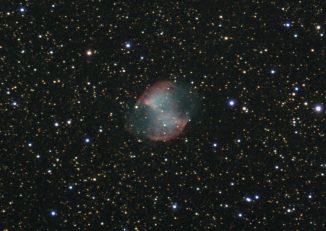
The Vorarlberger Amateur Astronomen acquired a QHY163c cooled CMOS camera. It is based on a Panasonic Micro-Four-Thirds (m43) sensor, but has added cooling and an astronomical suitable ir-cut filter. Read More
Here are some first results of this weekends “Lange Nacht der Sterne” starparty.
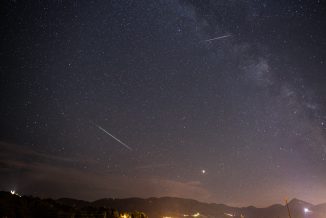
Me and my family spend the night of August 11th on the Gamserrugg mountain (2075m, 6811ft elevation) in Switzerland, where a friend works as the shepherd during summer. Read More
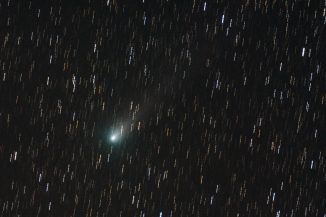
Comet 21P/Giacobini-Zinner is a short period comet of the Jupiter family.
This year’s apparition is quite favourable, as it places the comet in the evning sky. Best visibility should be around September 11th, where it should almost become naked eye visible. In binoculars or a telescope it is already a nice view. I observed it with the 127mm refractor, where it visually showed a short tail. Read More
Modern lenses provide pinpoint stars in nighsky photos, But this reduces all stars to small points, constellations are almost unrecognizable.
This is an image which is a part of a timelapse sequence taken with a Sony #RX100 IV camera. Mars, Saturn and the Milky Way are clearly visible.
The longest lunar eclipse of the 21st century took place during our vacation in Corsica, here are some shots taken from the beach:
Since this was a camping vacation I only had minimal gear with me, a Sony RX100 IV compact camera, and my wife’s Olympus E-PL5 with the kit zoom lenses. The 40-150mm is equivalent to 300mm on full-frame cameras, so the close-ups are cropped heavily.